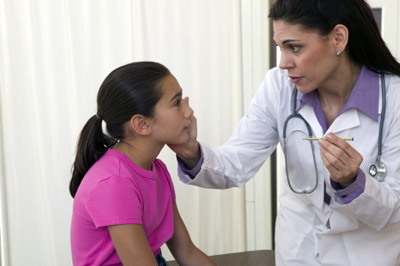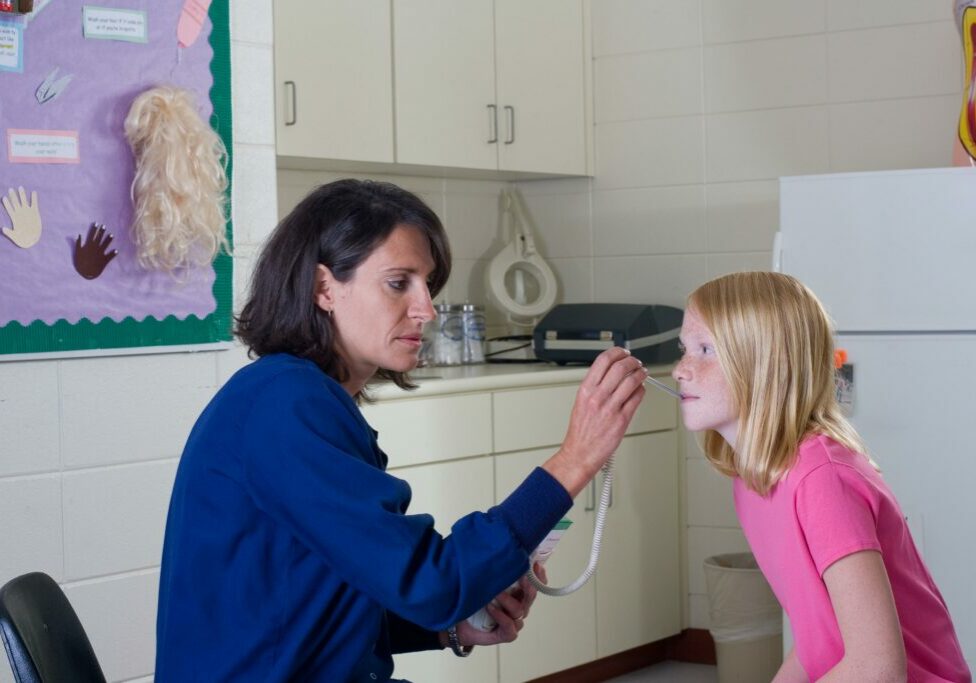Published in the November 2016 NJEA Review
By Adrienne Markowitz and Eileen Senn
No healthy schools without healthy nurses
Healthy and safe school nurses help keep students, staff and schools healthy and safe. Research published in 2014 determined that for every dollar spent for school nursing, over two dollars were saved in health care procedures and parental time away from work. Full-time school nurses in the schools studied were credited with preventing excess medical costs and improved parent and teacher productivity. Other research showed that when a school nurse is present, a principal gains nearly an hour per day and teachers an extra 20 minutes a day to focus on education instead of student health issues.
Understaffing puts nurses at risk for overwork and burnout and some students at risk for poor health outcomes. Nurses experience stress from the responsibilities of care, emergencies, the need to make quick, important decisions, and exposure to serious traumatic events. Often they have long periods of routine work interrupted abruptly by periods of intense activity.
Besides stress and burnout, school nurses face other serious occupational safety and health hazards including airborne pathogens, such as influenza and tuberculosis (TB); bloodborne pathogens, such as HIV, hepatitis, and Zika; direct transmission, such as MRSA; workplace violence; and musculoskeletal disorders, including sprains, strains, tears and back injuries.
 Enough nurses?
Enough nurses?
There is certainly no glut of school nurses for the over 1.4 million students in New Jersey’s 2,522 public and charter schools. There were 2,056 full-time and 124 part-time certified school nurses according to 2015-16 data from the New Jersey Department of Education. There were also 504 full-time and 36 part-time noninstructional certified school nurses, who are not permitted to do health education. In addition, there are some noncertified nurses who must be supervised by a certified school nurse. But is that enough nurses?
In the June 2016 issue of Pediatrics, the American Academy of Pediatrics recommended that every school have one full-time registered nurse because of the “increasingly complex health needs” of today’s children. The National Association of School Nurses (NASN) in its January 2015 position statement, “School Nurse Workload: Staffing for Safe Care,” recommends that school nurse workloads be determined at least annually, using student and community specific health data. NASN does not endorse a one-size-fits-all approach.
New Jersey law requires school nurses to assess the staffing needs in their district each year, based on the health needs of the student population, and write a Nursing Service Plan. Unfortunately, districts are not required to provide the staffing they recommend.
New Jersey law requires only one certified school nurse in each district. That might be adequate in some of the very small districts in New Jersey, but in the state’s second largest district, Jersey City, that would be one nurse for 39 schools and over 34,000 PK-12 students. In actuality, Jersey City has 41 nurses in schools—one nurse in each school and two in several high schools. It also has 15 nurses in the district office. However, like many other districts, Jersey City has relatively small elementary schools and larger middle and high schools. Therefore, there are inequities because the number of students each nurse is responsible for varies significantly. In Jersey City schools, enrollments range from 400 to over 2,000 students.
Numerous job duties
The job duties of school nurses are extremely numerous and varied. Having more nurses helps to ensure that these important duties can be adequately addressed.
- Screen students for vision, hearing, height, weight, scoliosis, TB, blood pressure.
- Review immunizations.
- Check students for head lice and bedbugs; remove ticks.
- Administer medications including epinephrine, glycogen, and asthma inhalers and nebulizers.
- Provide first aid for sick or injured students.
- Monitor students with chronic health conditions such as asthma, diabetes, congenital heart disease, food allergies, excess weight and obesity.
- Manage catheters and feeding tubes.
- Follow up on students with elevated blood lead levels.
- Monitor students who have been treated for cancer.
- Monitor students with special needs including physical disabilities and learning and behavior problems.
- Counsel students on drugs, alcohol and sexually transmitted diseases.
- Provide emergency sanitary supplies and clothing.
- Counsel pregnant students.
- Arrange for disadvantaged students to receive breakfast and clothing.
- Help students to cope who are homeless or whose parents are incarcerated.
- Train school staff members on a variety of health issues.
- Serve on school and district committees to address student behavior and achievement.
- Communicate with healthcare providers.
- Develop individualized healthcare plans.
- Create emergency treatment plans.
- Collaborate with families to provide care and support student attendance.
- Assist students and their families to secure appropriate healthcare.
- Provide formal and informal health education.
- Support school staff members with health problems.
- Organize programs focused on staff managing hypertension, losing weight and managing stress.
- Advocate for families and children with special needs with child protective services, the legal system and school districts.
- Arrange for psychological counseling during times of school trauma.
Preventive measures
Local associations should work with their UniServ Field Representatives to determine whether staffing levels are up to nurses’ most recent Nursing Service Plan, and advocate for more staffing if they are not. Locals should also ensure that school nurses are protected and trained under the Public Employee Occupational Safety and Health (PEOSH) regulations on bloodborne pathogens, violence prevention guidelines and state laws on assaults on school employees. Some basic health and safety measures include:
- Frequent hand washing for the reduction of infections.
- Proper techniques to avoid needlestick injuries.
- Treat all bodily fluids as contaminated; use gloves, masks and eye protection.
- Training and hepatitis B vaccinations for those expected to clean up bodily fluids.
- Medical follow-up after bodily fluids exposure.
- Safe patient lifting techniques and a safe patient handling program.
- Debriefing after a critical event to help reduce the impact from stress.
- Not working alone before or after hours without security.
- Adequate ventilation for the nurse’s office.
For more information
- Bloodborne pathogens and needlestick prevention, OSHA Topic Page,
- Ergonomics, OSHA Topic Page,
- Stress in healthcare, OSHA Topic Page,
- Workplace violence, OSHA Topic Page
Note: Links are case sensitive.
Adrienne Markowitz holds a Master of Science in Industrial Hygiene from Hunter College, City University of New York. Eileen Senn holds a Master of Science in Occupational Health from Temple University in Philadelphia. They are consultants with the New Jersey Work Environment Council, which is a frequent partner with NJEA on school health and safety concerns.
